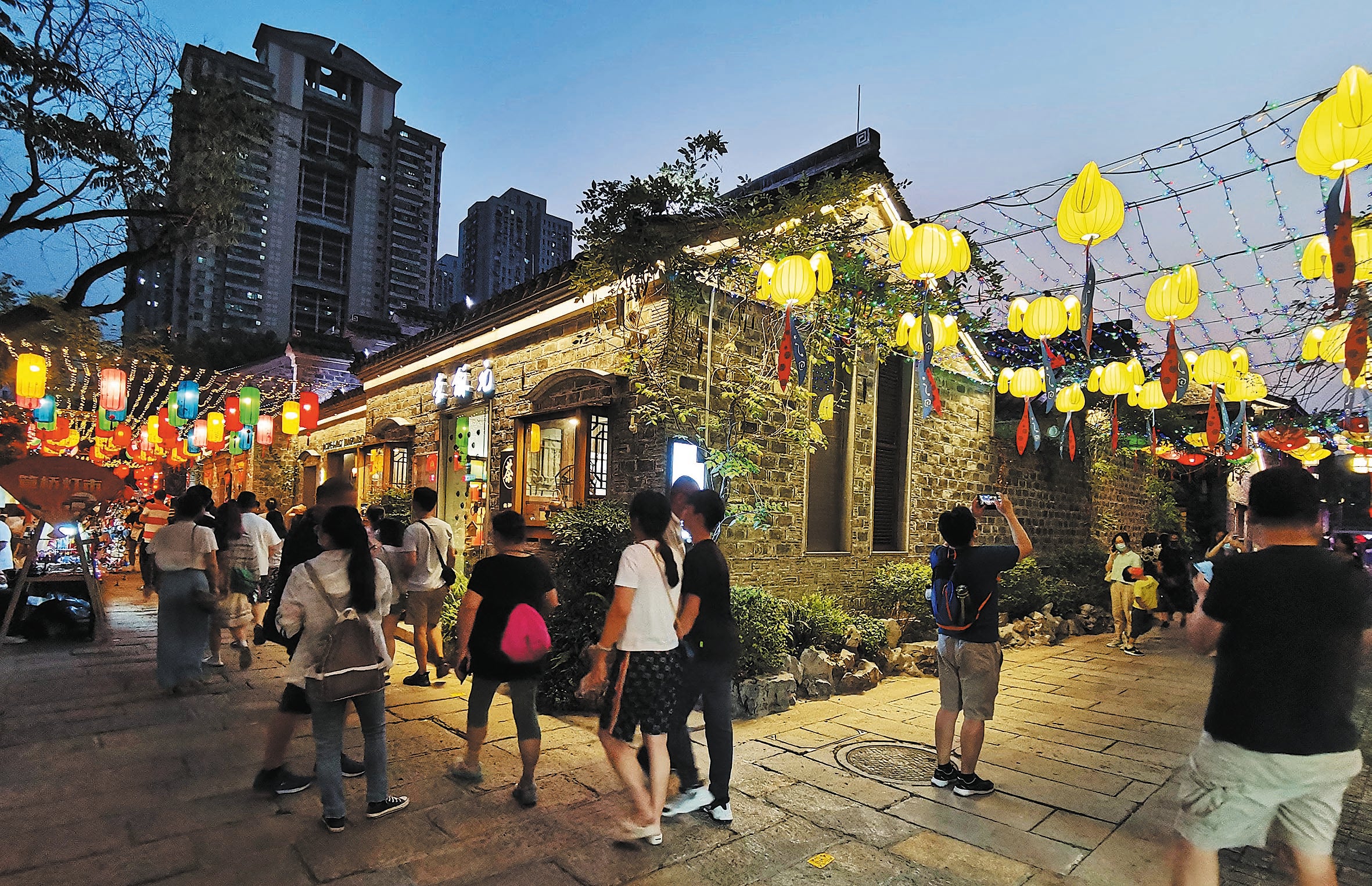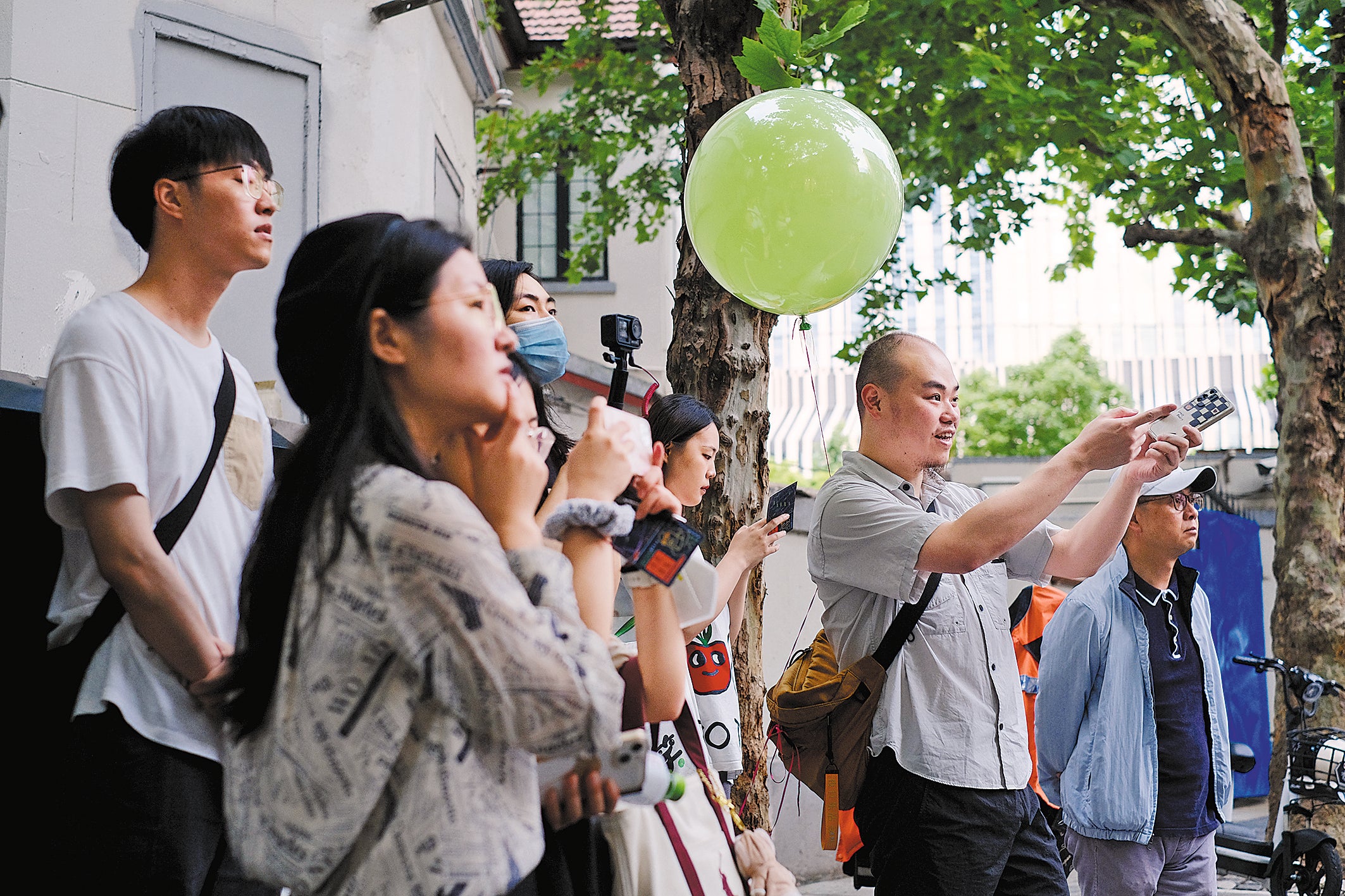Walkers get a feel for the real city deal
THE ARTICLES ON THESE PAGES ARE PRODUCED BY CHINA DAILY, WHICH TAKES SOLE RESPONSIBILITY FOR THE CONTENTS

For Fang Rui, walking the streets of Nanjing, the capital of Jiangsu province, and taking in the buildings and culture of the historical city is almost a daily routine.
Born and raised in Nanjing, the 28-year-old works as a landscape designer in the city after studying overseas for several years. After she returned home she found that walking through the city, visiting and observing cultural and historical sites, gave her life new meaning.
In May, Fang organised a free city walk for about 50 people who came from all over the country to experience a deeper connection with Nanjing.
The city-walk pastime of following planned routes to explore a city’s history, culture and urban environment originated in London. The pastime is now attracting a growing number of followers in China, with many young people taking part.
Tongcheng Travel, a travel agency in Suzhou, Jiangsu province, says that travel searches related to “city walk” increased 108 per cent in July from the previous month. Walking routes in Beijing, Xi’an, Shaanxi province, Chengdu, Sichuan province, Suzhou and Changsha, Hunan province, have attracted great interest from young travellers.
For tourists as well as locals not fully familiar with a city’s history and culture, the organised walks are an authentic and immersive experience. Walk organisers provide the information and are passionate and care about a city’s cultural heritage. They also have a more personalised and deeper understanding of their city, which goes beyond just visiting well-known landmarks.
Unlike regimented travel, where people try to visit as many places as they can in the shortest possible time, city walks allow people to linger and absorb the surroundings.
Fang’s organised walk in May through Nanjing’s Qinhuai district renewed her bond with the city and helped the tour participants better understand its cultural heritage in a tangible and interesting way.
She chose to walk in Cinna Lane, or Xinan Li, a tourist area that is not as popular or well-known as other Nanjing landmarks. The walk lasted about 90 minutes, with Fang’s group covering a distance of 2.4 miles.
The district has preserved various historical buildings, with the most well-known being the former residence of the scholar Gan Xi, which was built during the reign of the Qing Emperor Jiaqing (1796-1820). In terms of its grand scale and layout, it is believed to be the largest and most complete ancient residential building compound in China.
During urban renewal, residents living in some old buildings were moved out, Fang said, but the historical structures were left standing.
“One of the aims of our city walks is also to let participants become witnesses to the transformation of the city itself,” Fang said.
In addition to the educational aspect of the city walks, they also provide good exercise and can help relieve the stress of the work week.

Zha Beibei, 28, has lived in Beijing for almost 10 years. She likes to stroll the streets of the capital after work and at weekends.
“It’s a leisurely and enjoyable way that involves exercise with multiple elements,” she said.
“The relaxation is addictive and these journeys of exploration have been very happy experiences.”
In May she took a 2.3-mile walk through the streets and alleys of Dongsi subdistrict in Dongcheng district. Along the way, she passed art galleries and bookstores as well as landmarks such as the Peking University Red Building and the former site of the Sino-French University.
“In an ever-changing city its ongoing dynamics are hard to distinguish unless you walk along a street and see the old houses undergoing changes,” said Jin Yi, a researcher with the School of Social and Behavioral Sciences at Nanjing University.
Awareness of physical surroundings and the nuances of daily life are sharpened by taking walks, he said. “By observing other people’s lives we gain insight into our own lives, which at least enables us to establish a stronger sense of connection and helps us find a sense of purpose in bustling urban cities.”
